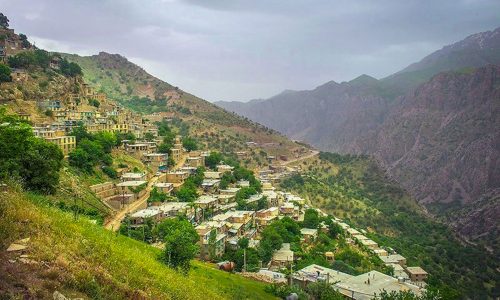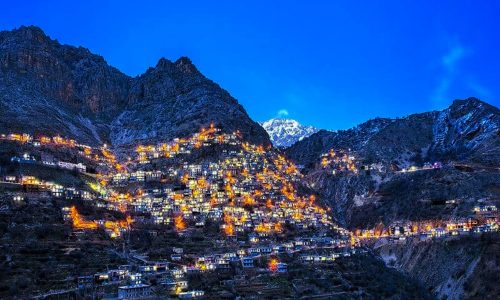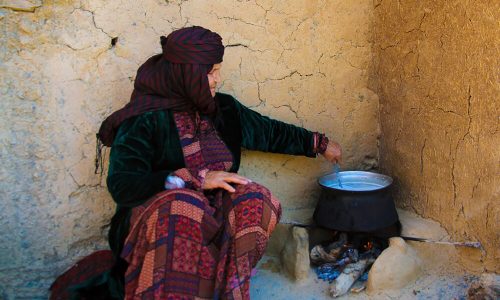Uraman takht Village
Uraman takht Village

A magnificent stair-stepped village with a history of one-thousand years in Kurdistan
One of the most amazing, untouched parts of Iran is Kurdistan province. This mountainous region is located in the west part of the country and with a very delightful climate and unique natural landscapes, which is home to one of the most authentic and original Iranian tribes.
Having a unique rural stepped texture, architecture, lifestyle, and agriculture, Hawraman is a historical region located in the Kurdistan province of Iran.
While the main part of Hawraman is located in Sanandaj, Marivan, Sarvabad, and Kamyaran cities of Kurdistan province, another part of it is located in Halabja province in Iraqi Kurdistan.

The history of this magnificent region dates back to thousands of years ago. Archeologists have discovered some stone tools in a cave located near the village, which had been made by Neanderthals or early modern humans more than 40 thousand years ago.
The name of the village proves the long history of Uraman as well. The word Hawraman is a compound noun: “Hawra” that means Ahura and “Man” which means the place, home, or land and Hawraman means the land of Ahuramazda or the place of Ahuramazda.Hawraman in the Kurdish language means the land of sun.
According to the people’s belief, Uraman used to be a big city and of great importance in the past, hence it was known as Takht (meaning throne) or the center of the government.
>One is astounded and amazed at how the local people living in the area have managed to skillfully construct their homes in the shape of many long and wide stairs within the foothills of the mountain.Homes in Oraman are built almost entirely of stone and wood without the use of mortar. Oraman’s green landscape and tiered structure bring to mind a stairway to heaven. The village is rich in Persian oak, ash and fig trees as well as plant species such as rheum, salsify and morning glory. Oraman is also home to animal species like the Persian squirrel.
Language and Culture:

The culture of the region is very rich and remarkable. The residents of the village are Sunni Muslims and speak in the Urami or Hawrami dialect of the Kurdish language.
The dialect is believed to be one of the oldest dialects of the northwestern Iranian language, Zaza-Gorani. According to a survey carried out in 1996, there were 40 thousand speakers of this language in the world.
Just like the people of other villages of Kurdistan, residents of Uraman wear local Kurdish clothes, of bright and attractive colors and patterns.
Traditional clothing for women includes either a vest or long-sleeved jacket or long overcoat worn over a gown.An underdress and puffy pants are worn beneath the gown. Traditionally women wore Kurdish hats ornamented with valued colored stones, beads, and gold pieces.
Usually, younger women and young girls wear brightly colored dresses adorned with many beads and sequins and the older women wear darker colors and white head-cover.
Hawrami men generally wear a shirt; a vest with an open neck; and baggy trousers fitted at the ankles. A cotton sash 3–4 m long is folded in half lengthwise and wrapped tightly around the torso on the waist.
Men also wore traditional brown felt jackets with pointed shoulders called Kolabal.
Folk music and folk dance called Halparke are very popular among the locals and Uraman has been the center of Kurdish traditional and folk music.
A special style of singing called Siah Cheshmane- meaning dark eyes- exist between locals which are performed without any instrument and is generally used for storytelling and entertainment.
Among traditional arts and handicrafts of the people are various kinds of felt, cotton shoes, woolen rugs (called Jajim), wooden cutlery, windows, and doors.
Uramanat in Iran has been registered as the 26th UNESCO World Heritage Site of Iran.
